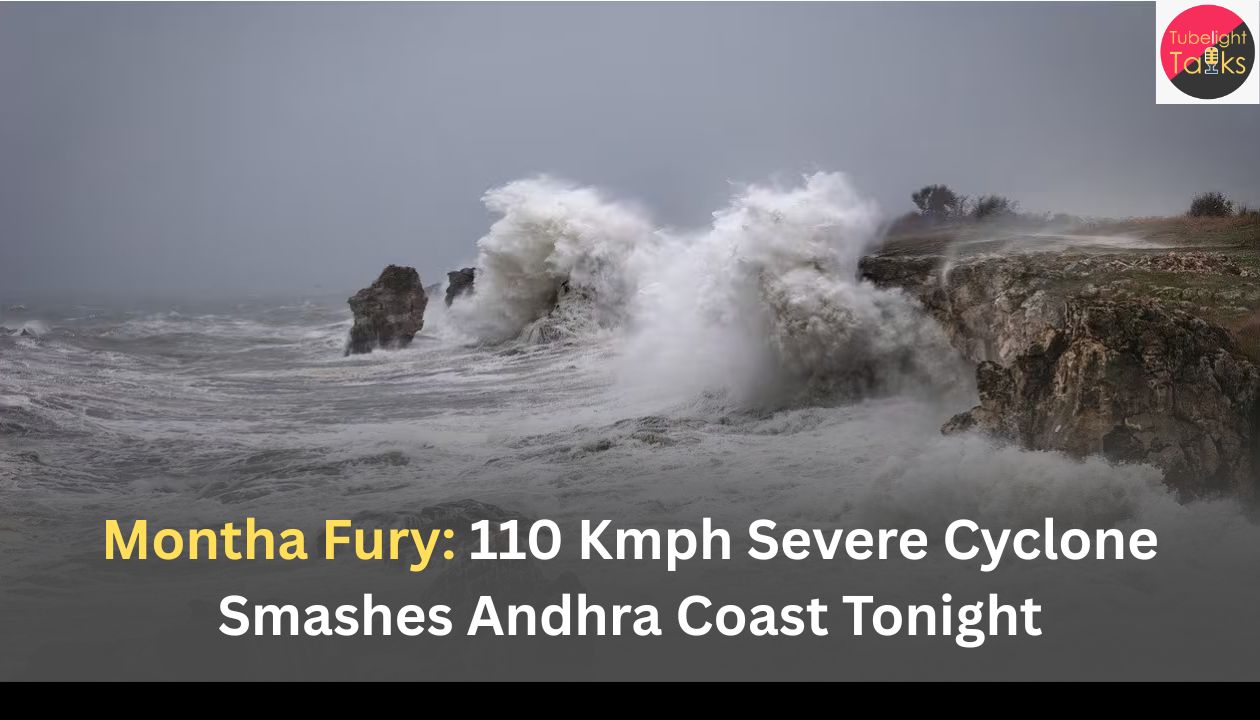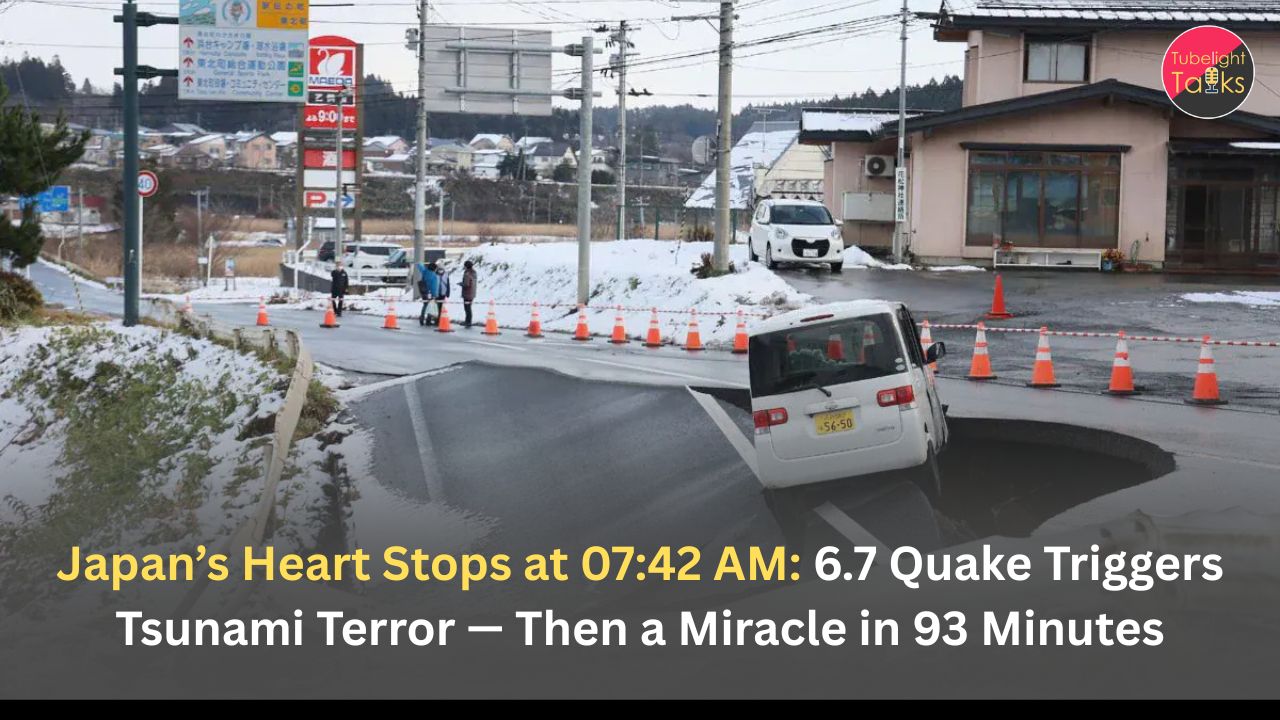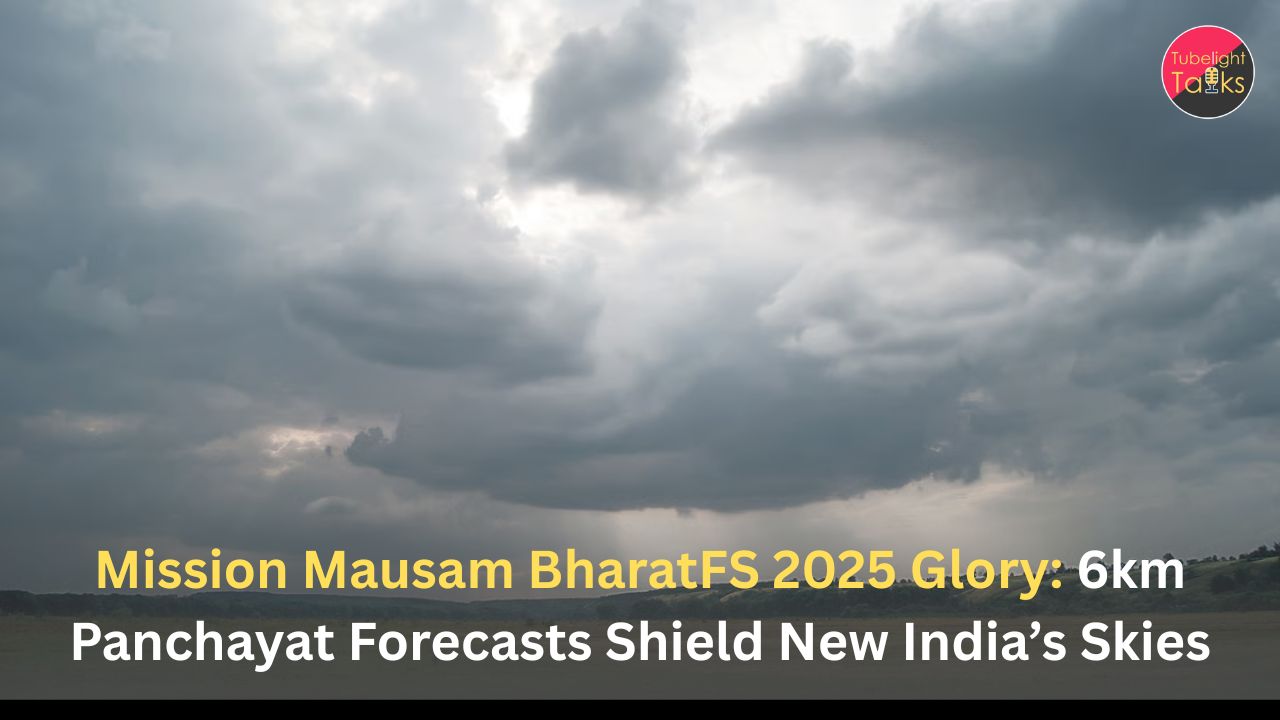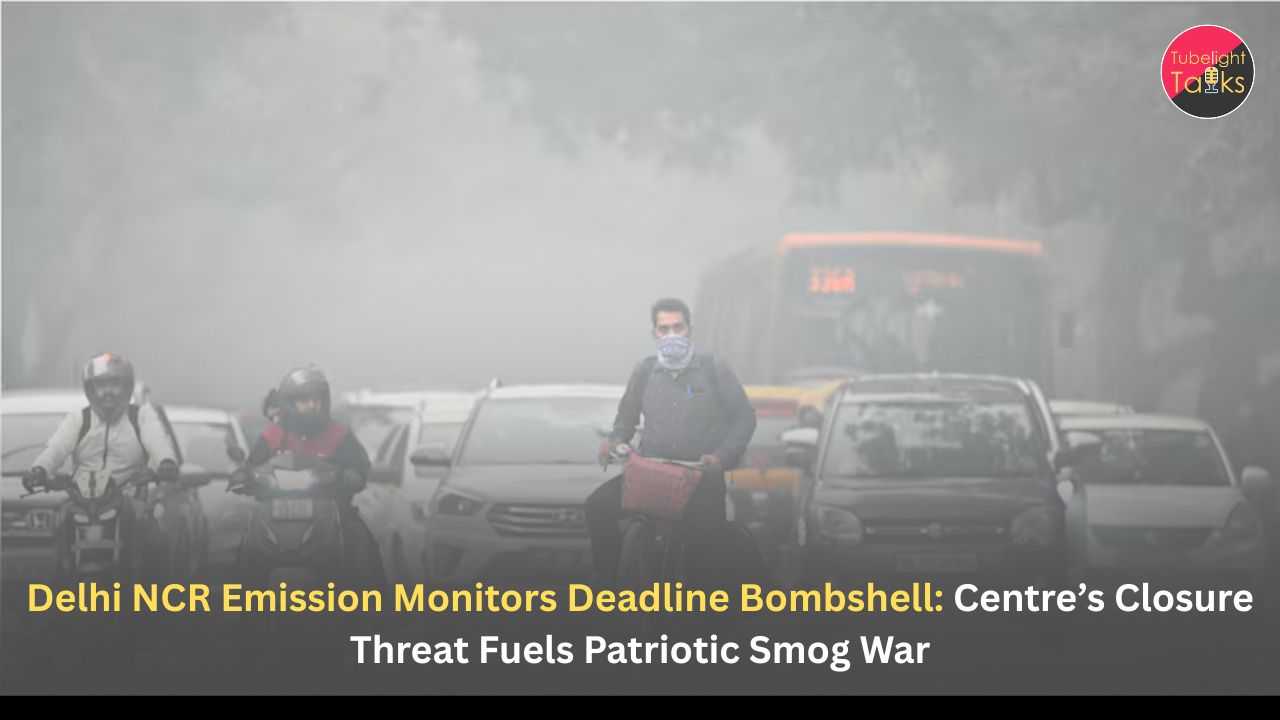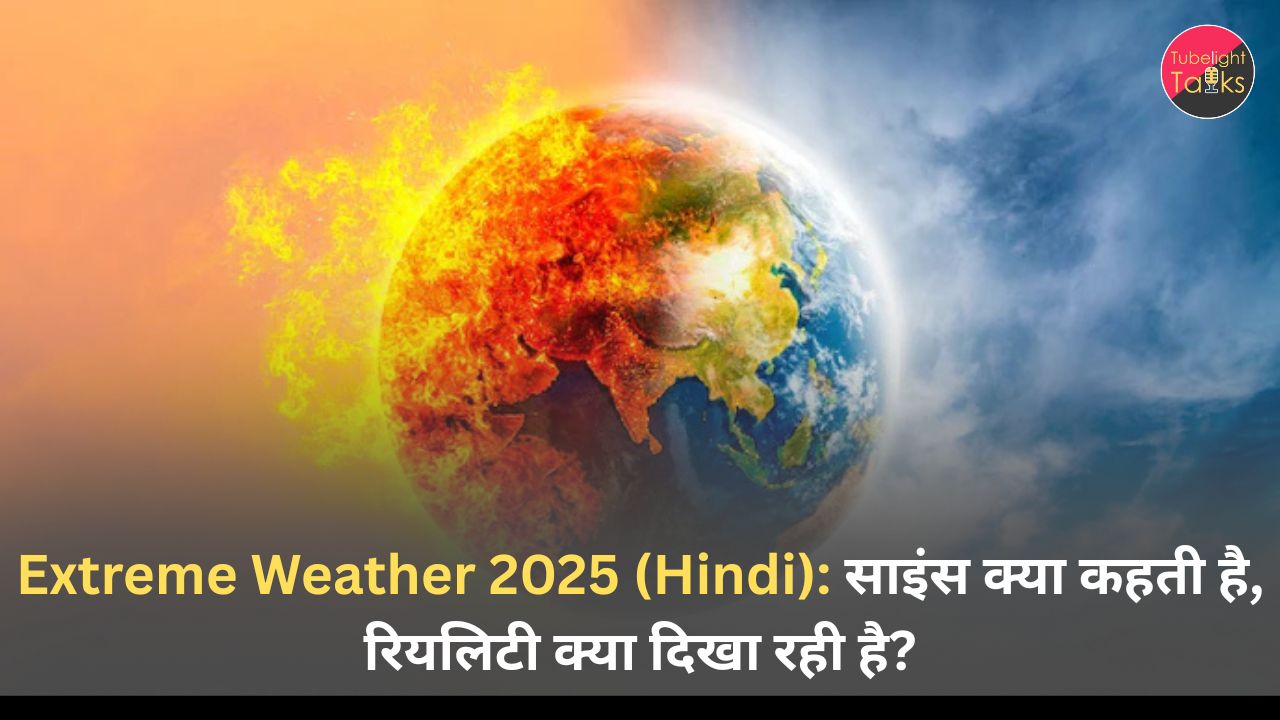Montha Fury: The moment of peak danger has arrived. Cyclone Montha, a severe cyclonic storm, has commenced its landfall procedure along the Andhra Pradesh coast, bringing with it rain and powerful gales. The India Meteorological Department (IMD) confirms the storm is on a northwestward trajectory, expected to cross between Machilipatnam and Kalingapatnam, near Kakinada, during the evening or night of October 28. This system, moving at 18 km per hour, is predicted to unleash destructive maximum sustained winds of 90–100 kmph, gusting up to 110 kmph, alongside a dangerous storm surge of up to 1 meter.
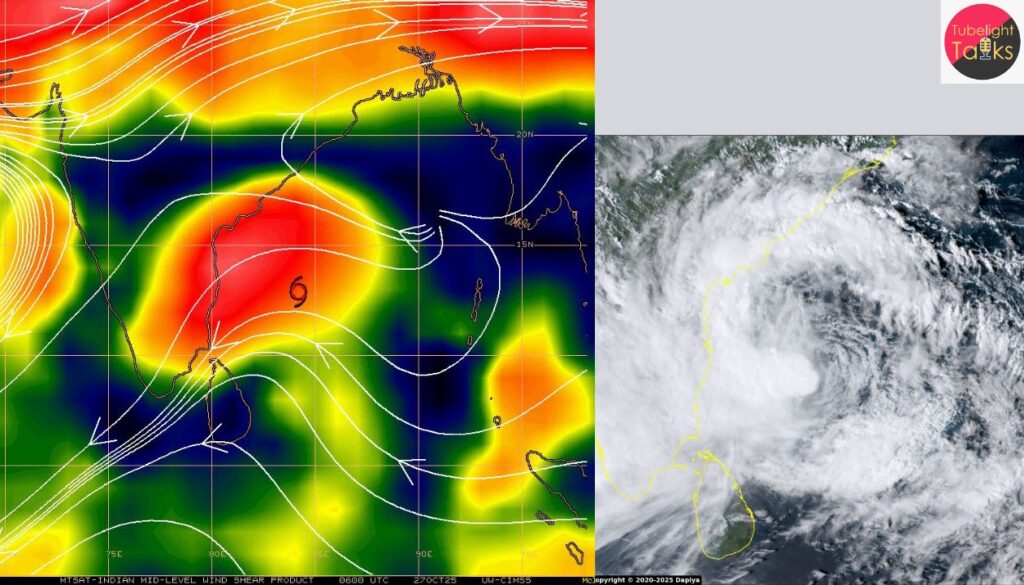
With 23 Andhra districts on high alert and massive evacuations underway in Odisha, the full scale of this weather event is now impacting eastern and southern India.
Essential Insights into Cyclone Montha’s Impact and Preparedness
This section outlines the critical, need-to-know information for readers, structured for high visibility in search results.
- Montha Landfall Location and Timing: The severe cyclonic storm is making landfall on the Andhra Pradesh coast, specifically between Machilipatnam and Kalingapatnam, near Kakinada, on the evening/night of October 28.
- Maximum Wind Threat: Wind speeds at landfall are projected to peak between 90–100 kmph, with gusts reaching 110 kmph, carrying a high risk of damage.
- Andhra Pradesh on Red Alert: The IMD has issued Red and Orange Alerts for an unprecedented 23 of the 26 districts in Andhra Pradesh, including Kakinada, Krishna, Bapatla, and Nellore.
- Odisha Disaster Mobilization: Schools and Anganwadi centres are shut until October 30, and a force of over 5,000 highly skilled personnel (including ODRAF, NDRF, and Fire Services) has been deployed.
- Evacuation and Landslide Risk: Extensive evacuation is underway in coastal and hilly areas of Odisha, where 139 vulnerable landslide spots have been identified in the Gajapati district alone.
- Widespread Rainfall: The cyclone is extending its influence, bringing heavy to very heavy rainfall across Coastal Andhra Pradesh, Odisha, Telangana, Chhattisgarh, Tamil Nadu, and even light rain to Bengaluru throughout the week.
- Political Coordination: Prime Minister Narendra Modi has personally spoken to Andhra CM N Chandrababu Naidu, ensuring high-level coordination.
The Hour of Crossing: Wind, Storm Surge, and Coastal Threat
The intensification of the weather system was rapid, moving from a deep depression to a cyclonic storm on October 26, and is set to peak as a severe cyclonic storm by Tuesday morning. IMD scientist S Jagannath Kumar confirmed the expected intensity, warning not just of heavy to extremely heavy rainfall, but also of the critical threat posed by the 1-meter storm surge above the astronomical tide. This surge presents a major risk of inundation to low-lying coastal villages in districts like Kakinada and Konaseema, where the landfall is most focused.
Meanwhile, the movement speed of the weather system, recorded at 18 km per hour in the preceding six hours, emphasizes the need for rapid final-stage preparation.
Government Machinery on War Footing: Operation Montha
Authorities in both Andhra Pradesh and Odisha have activated comprehensive disaster mitigation plans, ensuring minimal loss of life and property.
Odisha’s Multi-Tiered Response
The state government placed all 30 districts on alert, focusing its resources on the eight districts under the ‘Red Warning’ for strong winds (up to 80kmph) and torrential rain:
- Deployment: Over 5,000 personnel, including 24 teams of ODRAF, five NDRF teams, and 99 Fire Service teams, have been strategically positioned, prepared for immediate rescue and relief operations.
- Mass Evacuation: People, including sadhus from the hills, elderly persons, and pregnant women, are being shifted to hospitals and safe shelters, driven by the new challenge of landslides in regions like Gajapati.
- Administrative Measures: All leaves for government employees in nine districts have been cancelled to ensure maximum attendance.
- Public Safety: Restrictions are strictly enforced, including the cancellation of tourist entry to Puri sea beaches on October 27, 28, and 29.
Andhra Pradesh: Preparedness and Supply Chain Security
The Andhra Pradesh government focused heavily on logistics and public distribution:
- An action plan was prepared covering Public Distribution System (PDS) commodities, ensuring all coastal fair price shops received stock by October 26.
- Fuel Inventory: District collectors were directed to coordinate with Oil Marketing Companies (OMCs) to ensure full stock of petrol, diesel, and LPG, particularly for power backup at telecom towers, hospitals, and cyclone shelters.
- Political Oversight: The critical situation prompted CM Naidu to direct officials to escalate precautionary measures, with IT Minister Nara Lokesh designated for communication with the PMO.
The Cyclone’s Extended Reach: Rain Alerts Across Southern and Eastern India
The weather system’s influence extends far beyond the landfall zone, triggering heavy rain alerts across multiple states:
- Telangana and Chhattisgarh: Heavy to very heavy rain is forecast from October 27–30.
- Tamil Nadu and Kerala: Rayalaseema, Tamil Nadu, Kerala & Mahe are on alert for heavy to very heavy rainfall on October 27–28, with an Orange Alert specifically issued for Thiruvallur in North Tamil Nadu.
- Bengal and Northeast: West Bengal is expected to see heavy rain between October 28 and 31, with light to moderate rain starting in South Bengal (including Kolkata) from October 27. Fishermen are strictly advised to return from the sea by October 27.
- South Karnataka’s Damp Week: Even Bengaluru will witness the storm’s residual effects, with a Yellow Alert for parts of Karnataka on October 28 and light to moderate rainfall forecast for Bengaluru throughout the week, alongside cloudy skies.
Montha: A Name of Irony and Significance
The name of the storm, Montha, carries a poignant irony. Suggested by Thailand, a member of the 13 nations contributing to the North Indian Ocean naming pool, it means “fragrant flower” or “beautiful flower” in Thai. The name, chosen by the RSMC, New Delhi, serves as a stark reminder of nature’s duality as the beautiful name now heralds destruction.
Also Read: Atlantic’s Chaotic Showdown: Cat 5 Humberto’s Swells and Imelda’s ‘Rain Bomb’ Threaten Coasts
A Spiritual Awakening: Interpreting Nature’s Severe Warnings
The escalating severity of natural events, such as Cyclone Montha, compels humanity to reflect on its actions. According to the unique spiritual knowledge revealed by Sant Rampal Ji Maharaj, true Dharma is righteous action (Satkarm), rooted in truth and compassion, not mere ritual. When mankind acts out of greed and neglects the Earth, it breaches the fundamental moral order. The path toward restoration requires an inner transformation—a necessary shift from exploitation toward simplicity, stewardship, and universal service. This crisis serves as a definitive call for global Spiritual Awakening.
To learn more about this profound spiritual path and unique knowledge, please visit the official website: www.jagatgururampalji.org. You can also find related spiritual discourses and information on the official YouTube channel: Sant Rampal Ji Maharaj.
Sustained Vigilance: The Critical Hours Ahead
As Cyclone Montha executes its final approach, the emphasis shifts entirely to sustained vigilance and immediate response. The comprehensive preparation across Andhra Pradesh and Odisha, from the deployment of over 5,000 rescue personnel to the closure of all schools, is aimed at preserving human life against the devastating 110 kmph winds and storm surge.
The coming hours are critical as the severe cyclonic storm barrels toward the coast, dictating the scale of relief operations needed across the vast tracts of Eastern and Southern India now grappling with the storm’s extended rainfall and destructive power.
FAQs on Cyclone Montha Landfall and Impact
1. When and where is Cyclone Montha expected to make landfall?
Cyclone Montha is expected to make landfall on the Andhra Pradesh coast, between Machilipatnam and Kalingapatnam, near Kakinada, during the evening/night of October 28 as a severe cyclonic storm.
2. What wind speeds are expected during Cyclone Montha’s landfall?
The storm is expected to bring maximum sustained winds of 90–100 kmph, with gusts potentially reaching up to 110 kmph, posing a high risk to the coastal areas.
3. Which Indian districts are under the highest alert due to Cyclone Montha?
Red Alerts are issued for coastal Andhra districts like Kakinada, Krishna, and Nellore. In Odisha, eight districts including Malkangiri, Koraput, and Gajapati are under a Red Warning.
4. What major safety measures have Odisha authorities taken?
Odisha has closed all schools and Anganwadi centers until October 30, deployed over 5,000 rescue personnel, and is evacuating people from coastal and landslide-vulnerable areas.
5. Will the cyclone affect the weather in Bengaluru this week?
Yes, the weather system is expected to bring light to moderate rainfall to Bengaluru throughout the week, with the city and parts of South Karnataka under a Yellow Alert.






